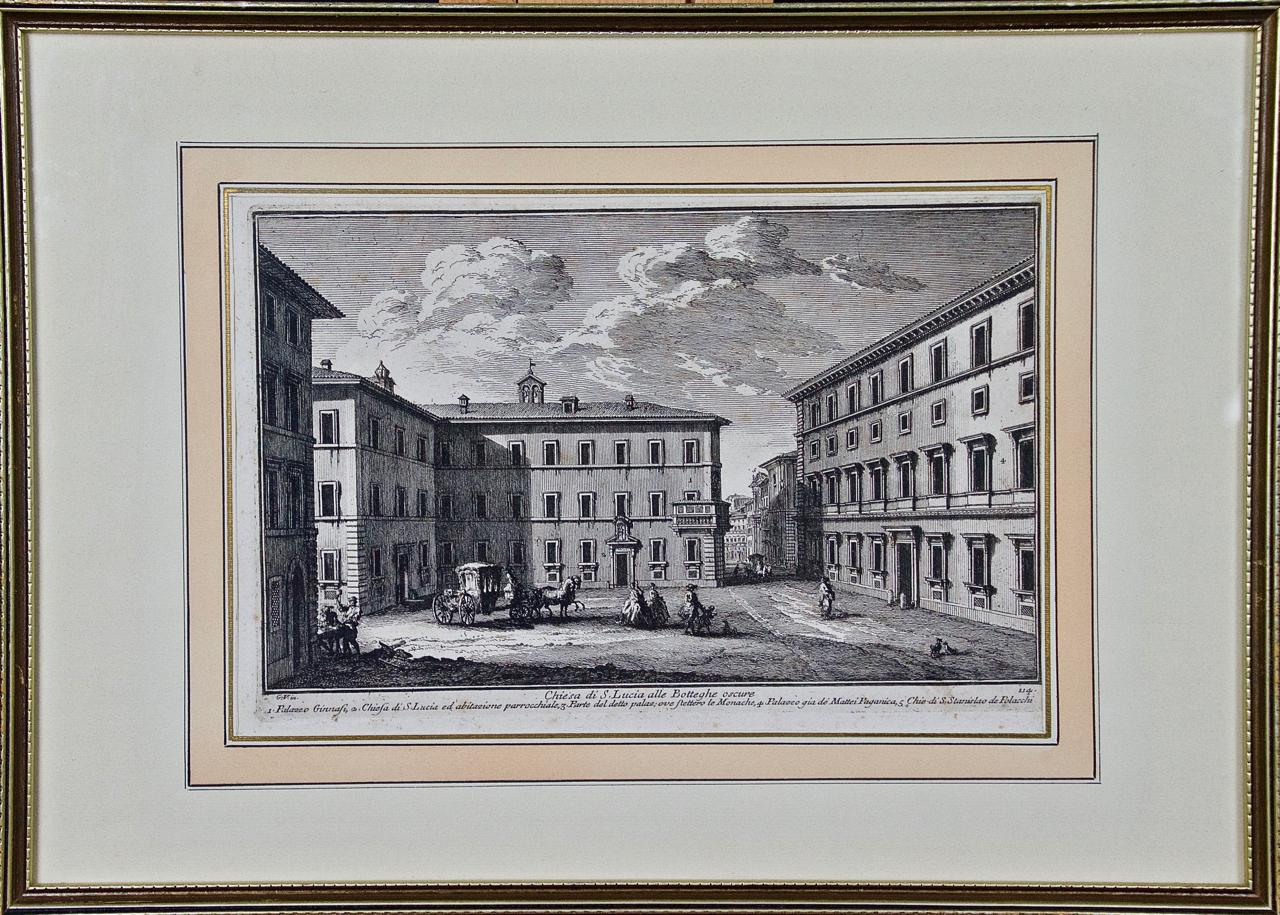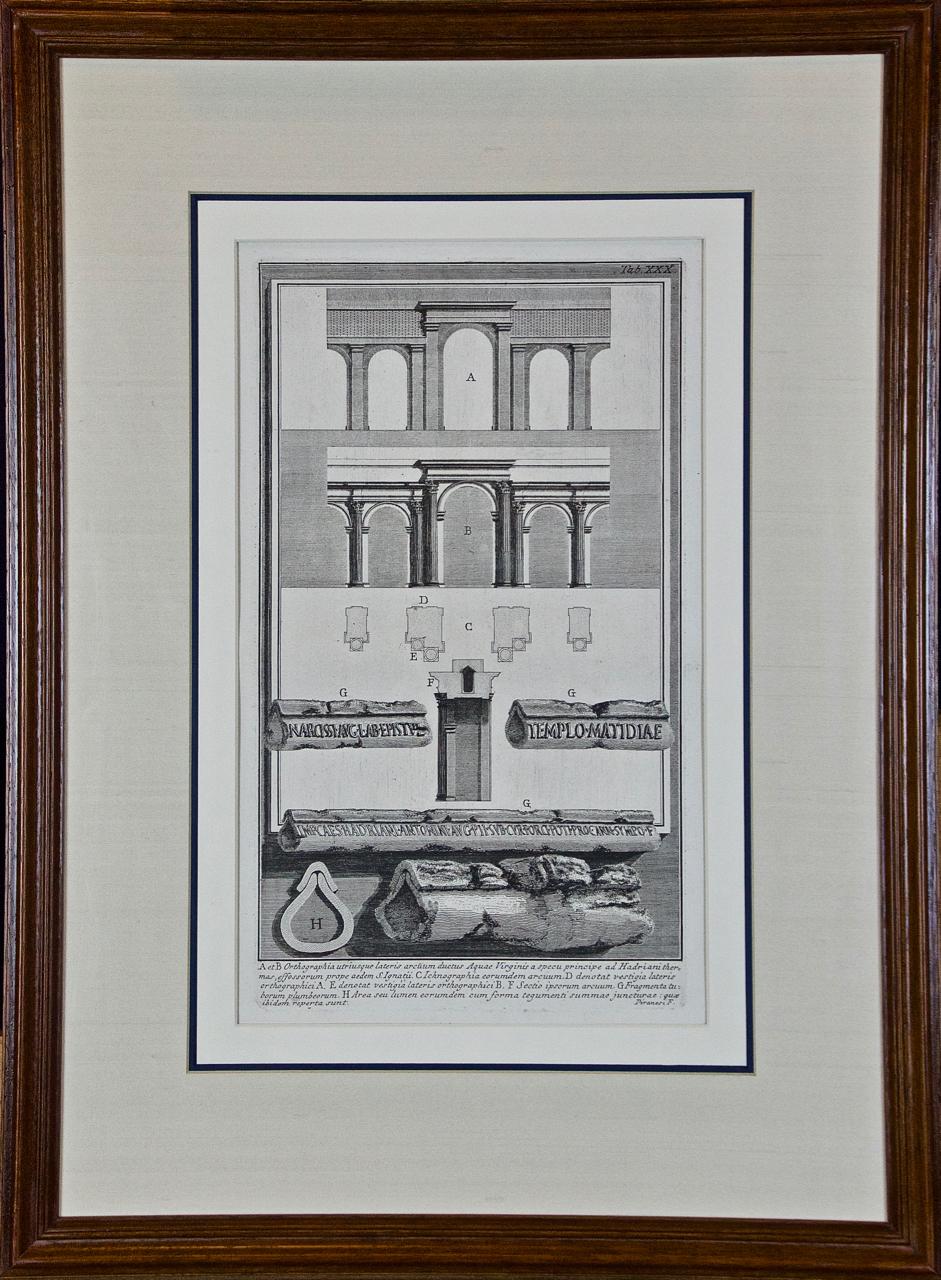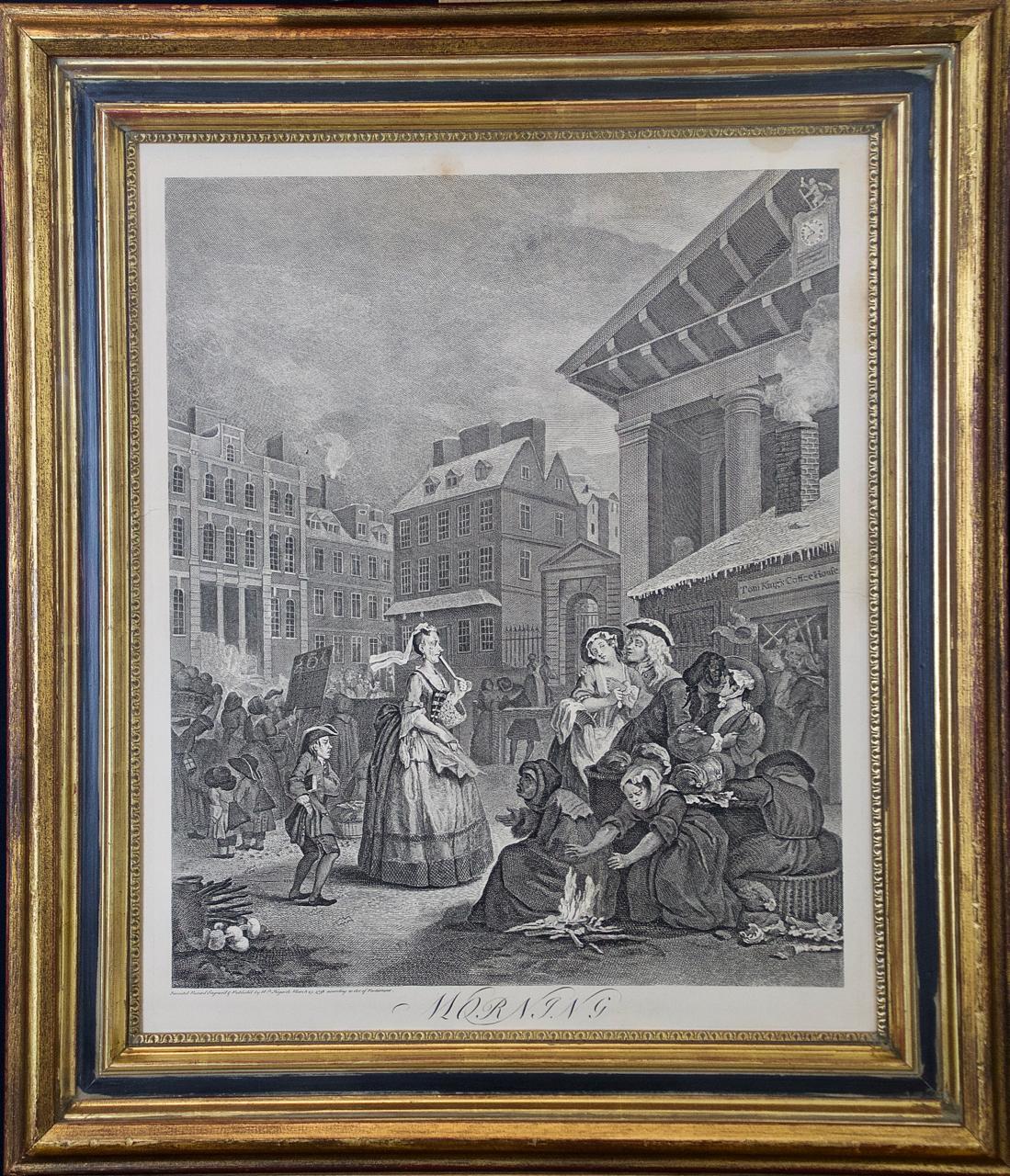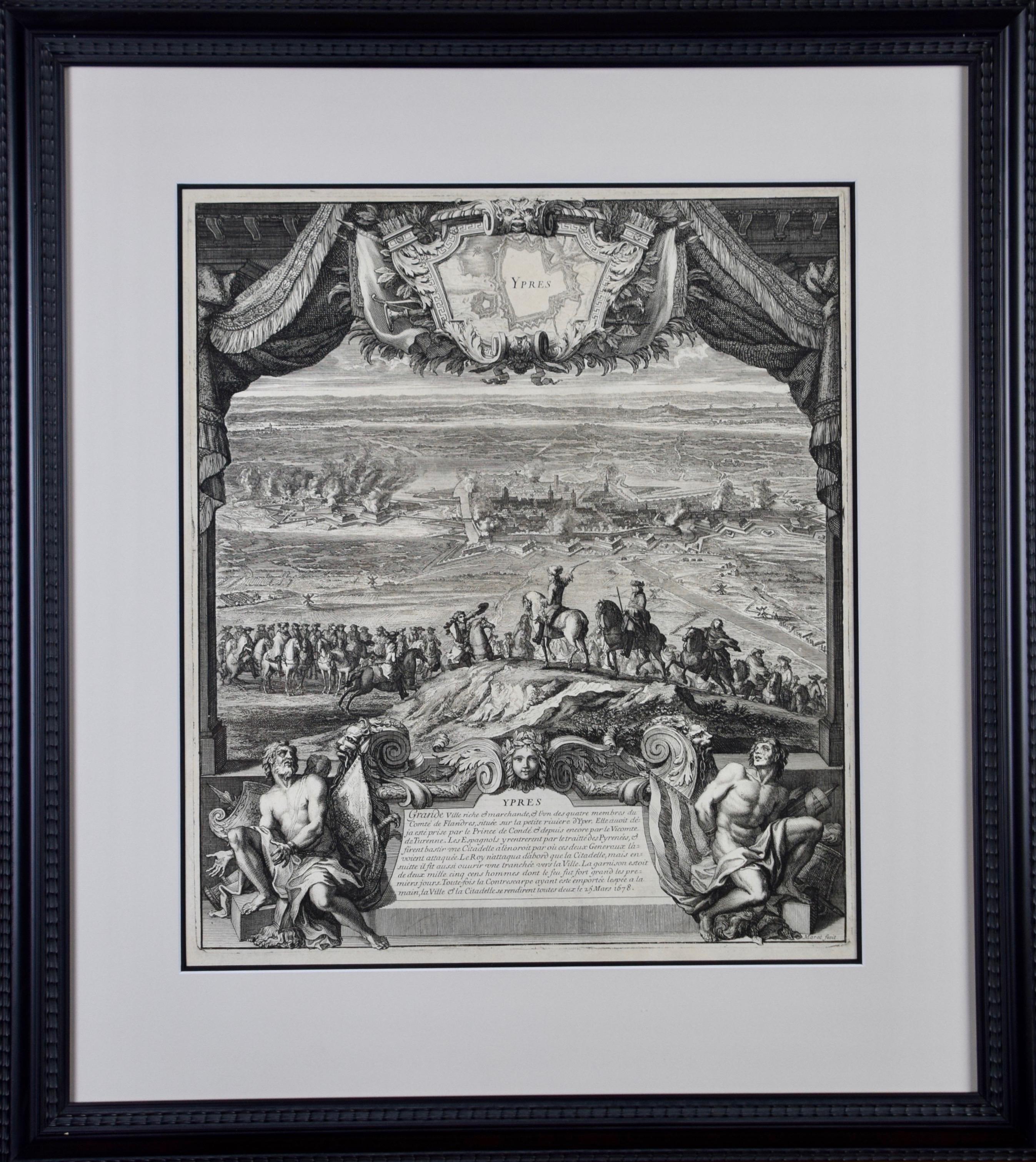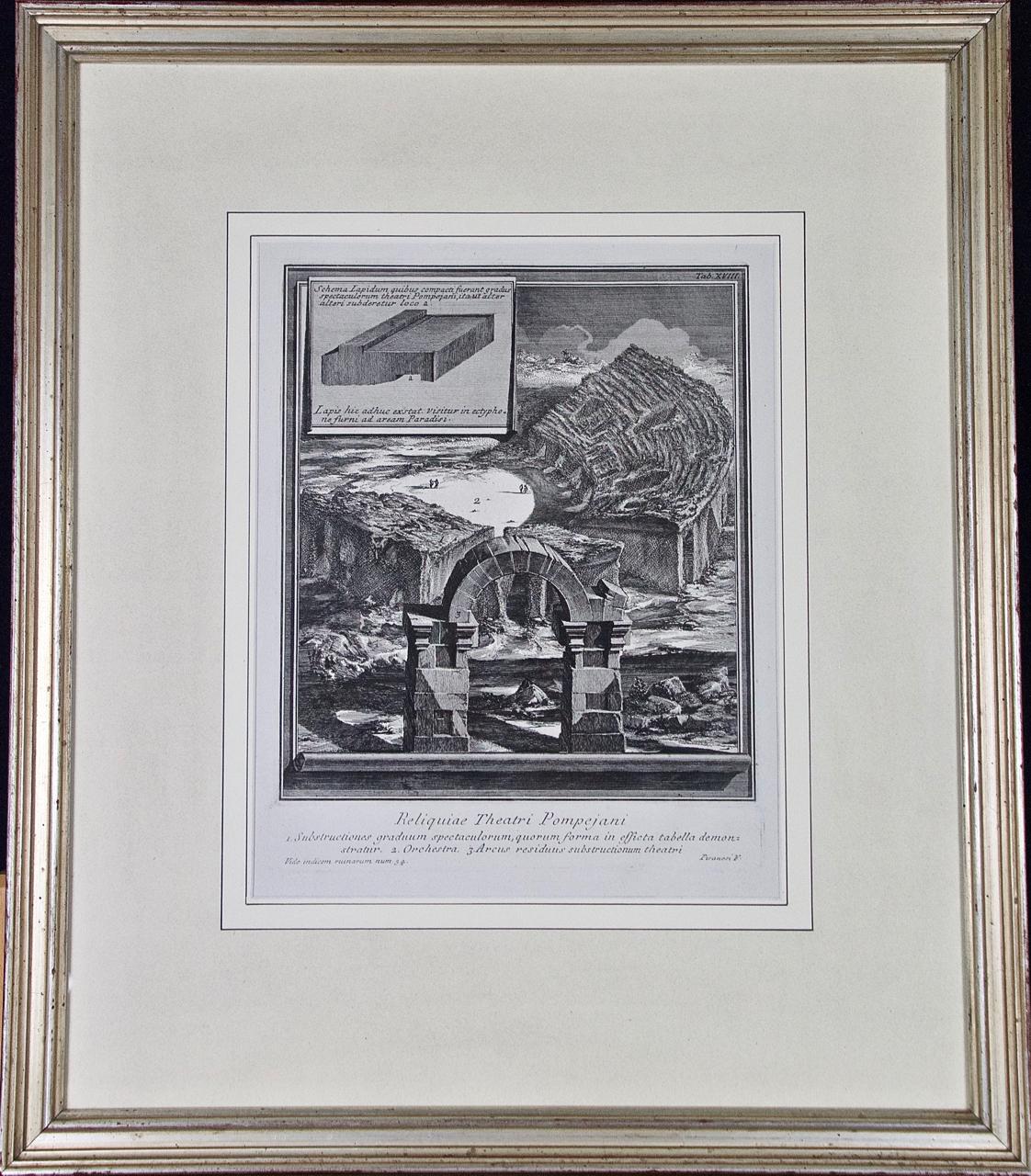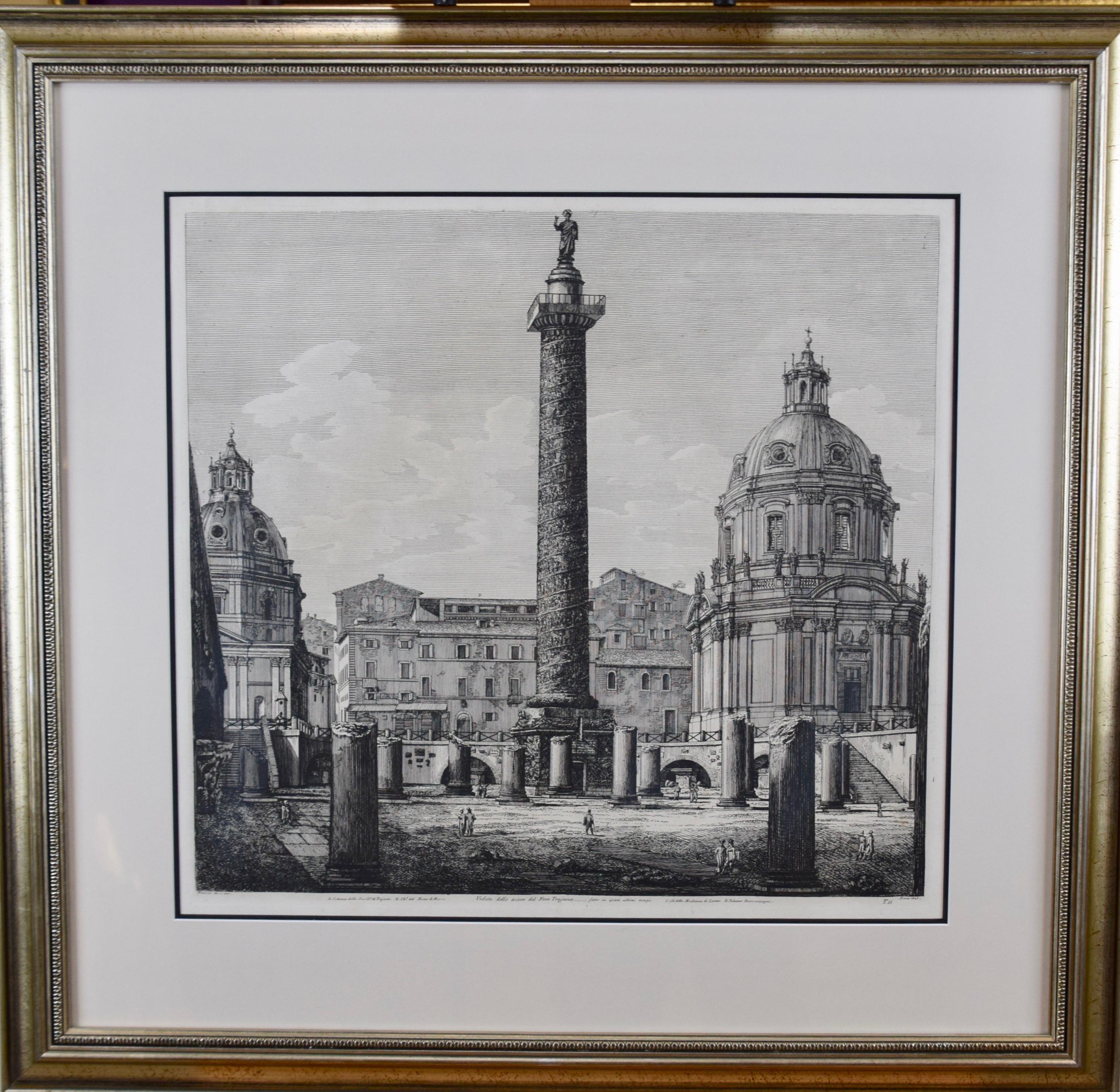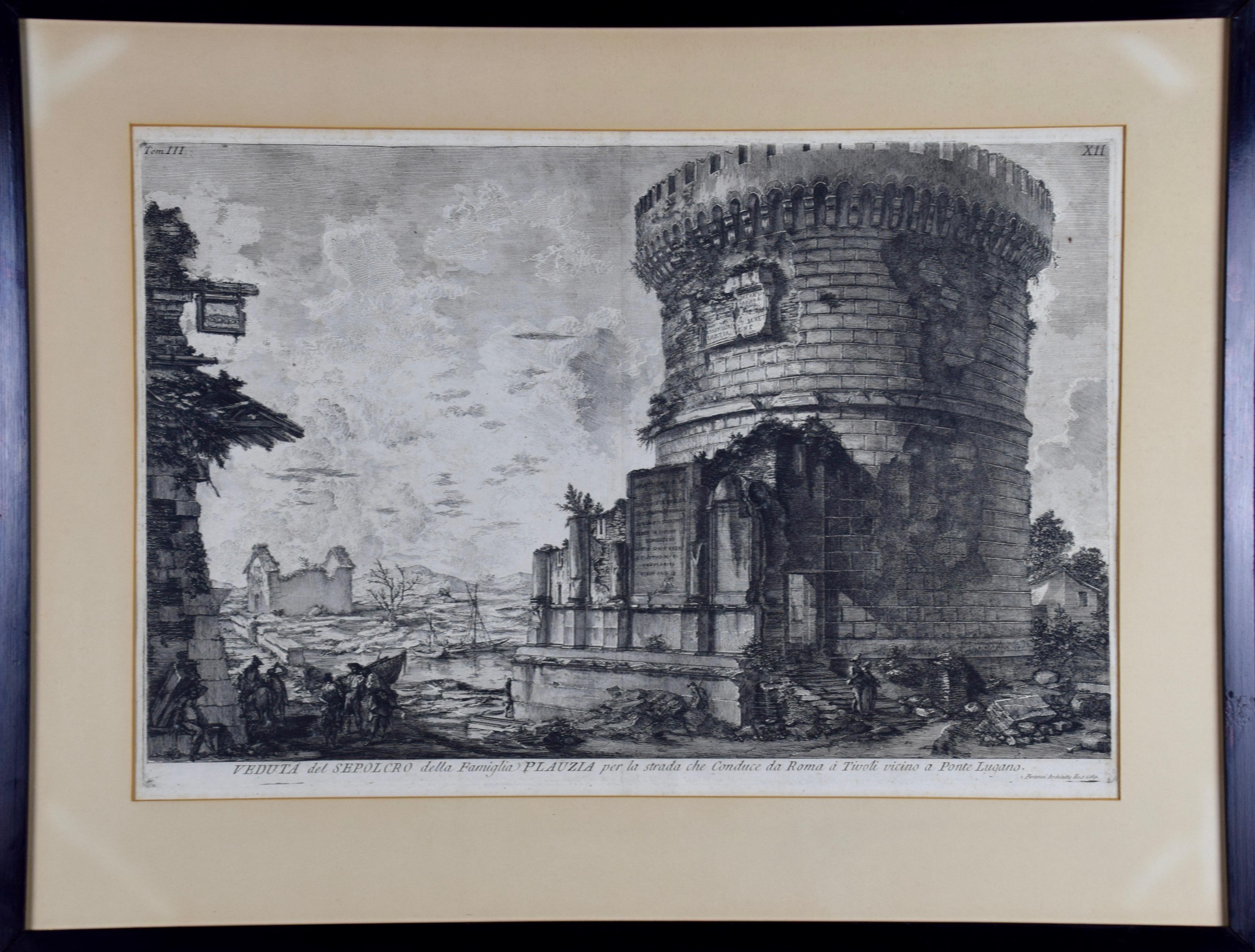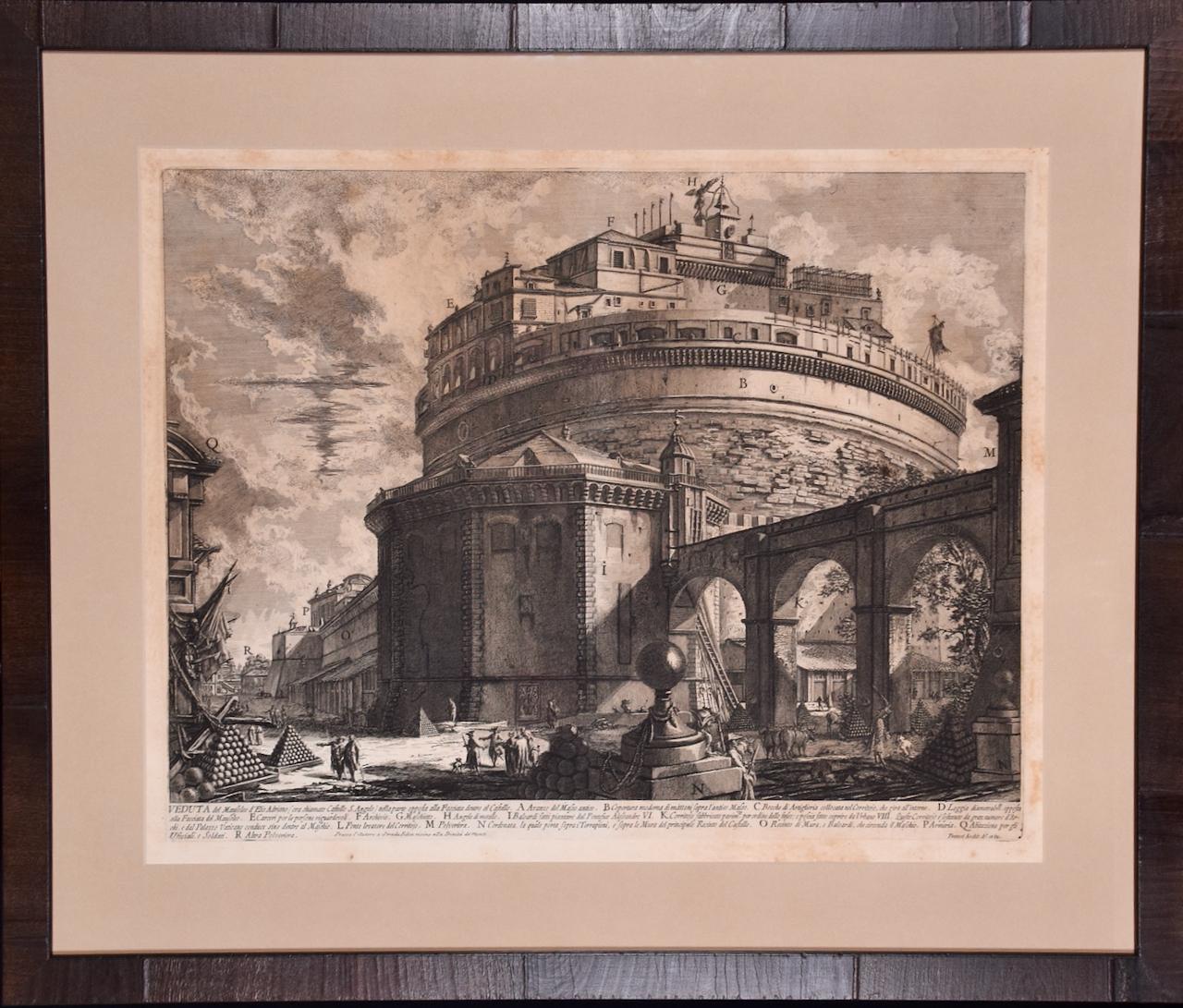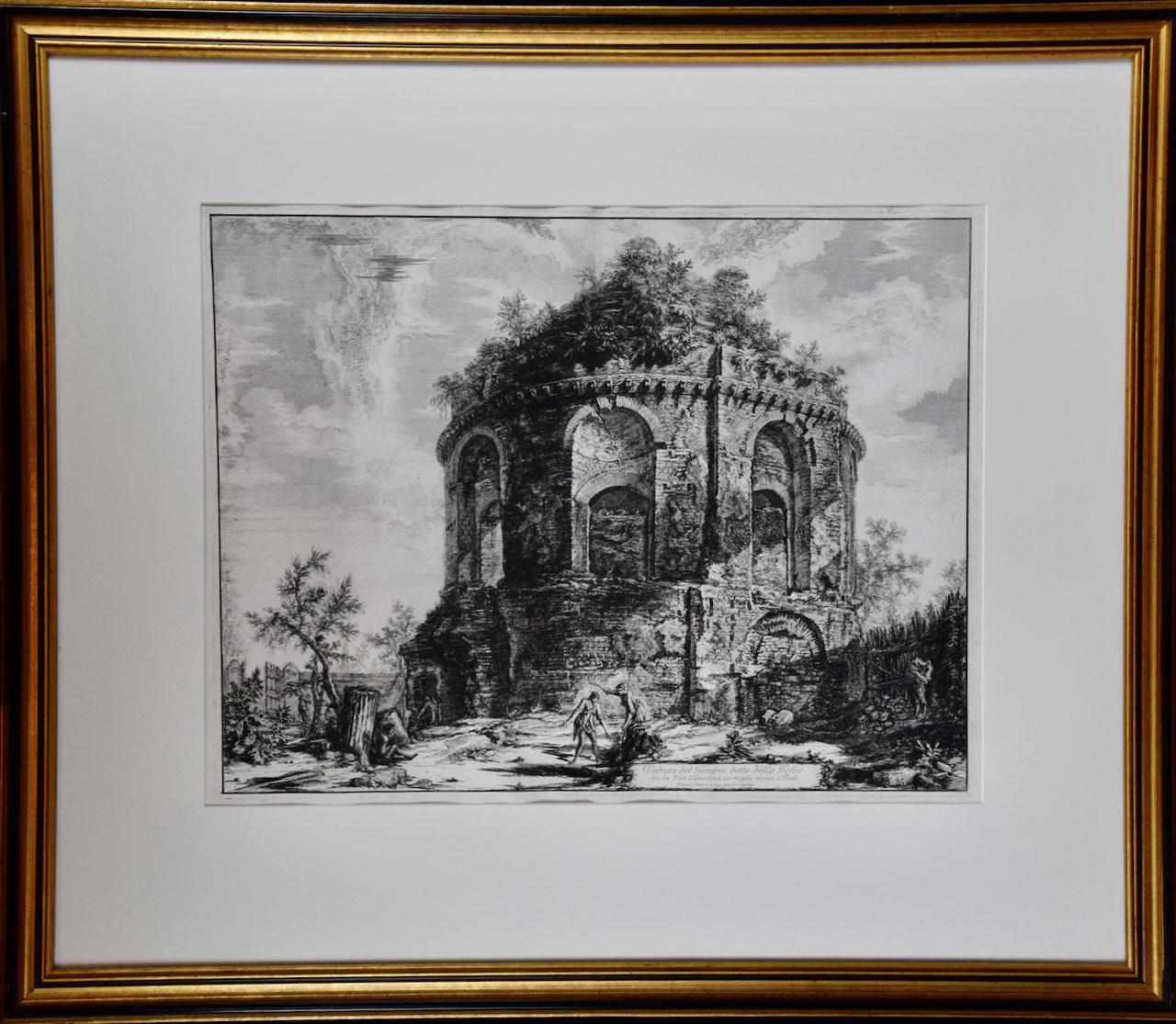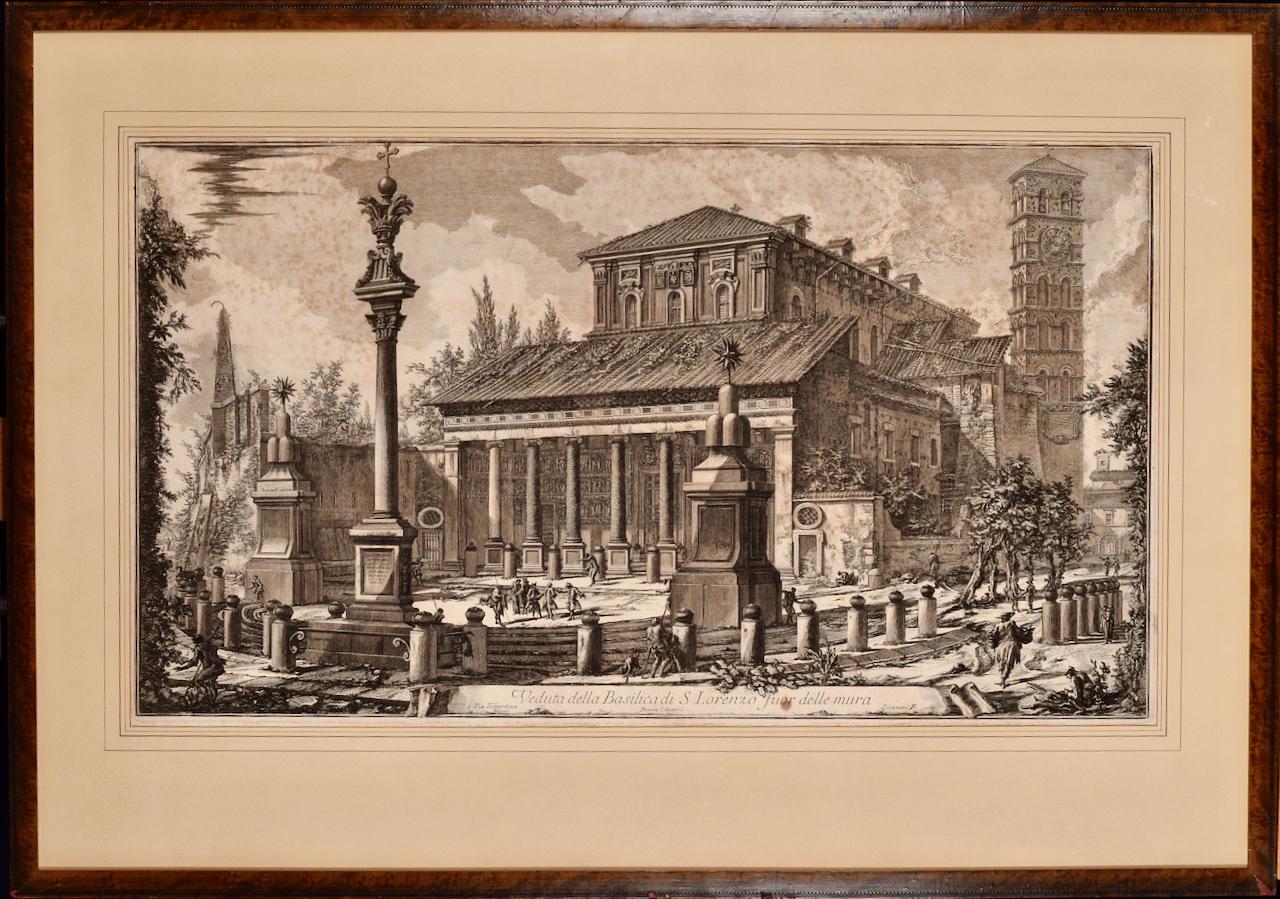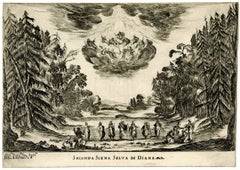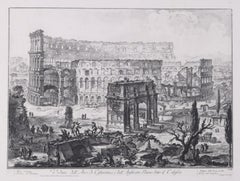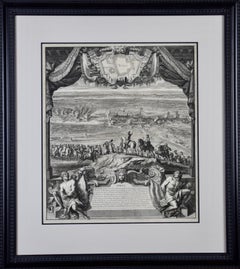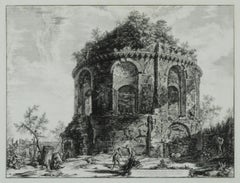
Veduta del Tempio
View Similar Items
Want more images or videos?
Request additional images or videos from the seller
1 of 10
Giovanni Battista PiranesiVeduta del Tempio1763
1763
About the Item
- Creator:Giovanni Battista Piranesi (1720-1778, Italian)
- Creation Year:1763
- Dimensions:Height: 17.32 in (44 cm)Width: 22.82 in (57.97 cm)
- Medium:
- Movement & Style:
- Period:1760-1769
- Condition:
- Gallery Location:Fairlawn, OH
- Reference Number:Seller: FA117301stDibs: LU14011068342
About the Seller
5.0
Recognized Seller
These prestigious sellers are industry leaders and represent the highest echelon for item quality and design.
Platinum Seller
These expertly vetted sellers are 1stDibs' most experienced sellers and are rated highest by our customers.
Established in 1978
1stDibs seller since 2013
711 sales on 1stDibs
Typical response time: 1 hour
Associations
International Fine Print Dealers Association
More From This SellerView All
- The Monumental TabletBy Giovanni Battista PiranesiLocated in Fairlawn, OHThe Monumental Tablet Etching, engraving, drypoint and burnishing, c. 1748 Series: Grotteschi (Grotesques, 4 plates) Original, unwashed condition. Excellent. Second edition first is...Category
1740s Old Masters Prints and Multiples
MaterialsEtching
- Scene II, Le Nozze Degli DeiBy Stefano Della BellaLocated in Fairlawn, OHScene II, Le Nozze Degli Dei Etching, 1637 Signed in the plate lower left The scene depicts the initial moment when Diana is revealed, surrounded by her nymphs, celebrating a success...Category
1630s Old Masters Landscape Prints
MaterialsEtching
- The Arch of Constantine and the ColosseumBy Giovanni Battista PiranesiLocated in Fairlawn, OHThe Arch of Constantine and the Colosseum Vedute dell' Arco di Costantino, e dell' Anfiteatro Flavio il Colosseo From: "Vedute di Roma" (Roman Views), part II An early Paris edition,...Category
1760s Old Masters Landscape Prints
MaterialsEtching
- The Ponte and Castel S. Angelo (Veduta del Ponte e Castello Sant' Angelo)By Giovanni Battista PiranesiLocated in Fairlawn, OHThe Ponte and Castel S. Angelo Veduta del Ponte e Castello Sant' Angelo Etching, 1754 Signed in the plate lower right above the caption From: Vedute di Roma A proper Roman printing with the price in the lower right corner. Printed on a Double Circle Fleur de Lys watermark paper, c. 1760, with full margins. A brilliant impression . Note: A view of the Tiber River, Castello Sant' Angelo and St. Peter's Basilica in the distance. Watermark: Double Circle Fleur de Lys References: Robison c/g Hind 29 ii/VII Foclllon 793 Condition: A Roman printing before the numbers added in Paris. Printed on a Double Circle Fleur-de-Lys watermark paper. Right margin folded over 5/8 inches for framing. Usual centerfold as issued in the album. Slight aging to the sheet. Binding holes at the left margin edge Framed with plexi. Plate size: 14 7/8 x 22 7/8 inches Sheet size: 21 5/8 x 30 5/16 inches Frame size: 22 3/4 x 33 1/2 inches Sant’Angelo Bridge, Italian Ponte Sant’Angelo, ancient (Latin) Pons Aelius, ancient Roman bridge, probably the finest surviving in Rome itself, built over the Tiber by the emperor Hadrian (reigned 117–138 AD) to connect the Campus Martius with his mausoleum (later renamed Castel Sant’Angelo). The bridge was completed about AD 135. It consists of seven stone arches and five main spans of about 60 feet (18 m) each, supported on piers 24 feet (7 m) high. In the 13th century Pope Clement IV installed an iron balustrade and in the 16th century Pope Clement VII placed statues of Saints Peter and Paul...Category
1750s Old Masters Landscape Prints
MaterialsEtching
- XXXIII Fig. I Avanzo del Tempio di Castore e PolluceBy Giovanni Battista PiranesiLocated in Fairlawn, OHXXXIII Fig. I Avanzo del Tempio di Castore e Polluce .View of the Remains of the Peristyle of the House of Nero, Etching, 1756 Signed in the plate (see photo) From: Le Antichità Roma...Category
1750s Old Masters Landscape Prints
MaterialsEtching
- View of the Ancient Structure built by Tarquinius Superbus called the Bel LidoBy Giovanni Battista PiranesiLocated in Fairlawn, OHView of the Ancient Structure built by Tarquinius Superbus called the Bel Lido, and like others built by Marcus Agrippa in the time of Augustus when he ...Category
1750s Old Masters Landscape Prints
MaterialsEtching
You May Also Like
- Piranesi Etching of Hadrian's Ancient Roman Aqueduct and Baths, "Aquae Virginis"By Giovanni Battista PiranesiLocated in Alamo, CAThis is a framed Giovanni Battista Piranesi (1720-1778) etching entitled "Orthographia utriusque lateris arcuum ductus Aquae Virginis a specu principe ad Hadriani thermas, effossorum...Category
Mid-18th Century Old Masters Landscape Prints
MaterialsEtching
- Four Framed Hogarth Engravings "Four Times of the Day"By William HogarthLocated in Alamo, CAThe four plates in this "Four Times of the Day" set were created utilizing both engraving and etching techniques by William Hogarth in 1738. Hogarth's original copper plates were refurbished where needed by James Heath and these engravings were republished in London in 1822 by Braddock, Cradock & Joy. This was the last time Hogarth's original copper plates were used for printing. Most were melted down during World War I for the construction of bombs. Printed upon early nineteenth century wove paper and with large, full margins as published by William Heath in 1822. The inscription below each print reads "Invented Painted & Engraved by Wm. Hogarth & Publish'd March 25. 1738 according to Act of Parliament". These large folio sized "Four Times of the Day" engravings/etchings are presented in complex gold-colored wood frames with black bands and scalloped gold inner trim. A majority of each thick impressive frame is covered with glass applied near the outer edge. Each frame measures 25.75" high, 22.25" wide and 1.88" deep. There are a few small dents in the edge of these frames, which are otherwise in very good condition. "Morning" has two focal areas of discoloration in the upper margin and some discoloration in the right margin, a short tear in the left margin and a short tear or crease in the right margin. "Noon" has a spot in the upper margin that extends into the upper image, but it is otherwise in very good condition. "Evening" has a faint spot in the upper margin, but it is otherwise in very good condition. "Night" is in excellent condition. The "Four Times of the Day" series is in the collection of many major museums, including: The British Museum, The Metropolitan Museum of Art, The Tate Museum, The Chicago Art Institute and The Victoria and Albert Museum. Through this series Hogarth is portraying early 18th century London street life at "Four Times of the Day". His characters are exhibiting their personalities, quircks, strange activities, but he also wants to draw attention the disparities between the wealthy aristocracy and the common working class. Plate 1, "Morning" depicts morning in Covent Garden in the winter in front of Tom King...Category
Mid-18th Century Old Masters Landscape Prints
MaterialsEngraving, Etching
- Daniel Marot's The Siege of the Dutch Fortified City of Ypres by Louis XIVBy Daniel MarotLocated in Alamo, CA"Ypres, Grand Ville Riche & Marchande" is an engraving and etching by Daniel Marot (le Vieux) (1661–1752). It depicts a view of the siege of the city of Ypres and its citadel on the left in the Spanish Netherlands by Louis XIV's troops. This battle took place between March 18 and March 25, 1678, as part of the Franco-Dutch War. Marot illustrated in great detail (best appreciated with magnification) the French attack on the strong pentagonal citadel on the extreme left, which had been built recently in anticipation of a French attack. The trenches built by the French approaching the town are seen on the right. King Louis XIV can be seen in the foreground surveying the battle mounted on his white horse, surrounded by his officers and troops. The print is presented in an attractive ornate black wood frame with a cream-colored double mat with a black inner trim. It is glazed with plexiglas. The frame measures 25.38" x 22.63" x .88". The engraving, frame, mat and glazing are in excellent condition. Artist: Daniel Marot (1661–1752) was also called "Le Vieux". He was the son of the famous architect, Jean Marot. Marot had diverse interests and talents. In addition to his art, he designed garden projects, architectural ornaments, furniture, and even upholstery. Marot as a Huguenot protestant was forced to leave France in 1685 following the revocation of the Edict of Nantes. He emigrated to Holland, where he worked for William of Orange (an arch enemy of his former employer Louis XIV). Marot was largely responsible for the interiors of Williams palace at the Loo. In 1694 he went Britain as William had married Queen Mary and he had become King William III of England. He later returned to Holland in about 1698 and died in the Hague in 1752. He left a lasting legacy on the decorative arts in the Netherlands, where his grand version of the Louis XIV style remained popular into the 1730s. Historical Background: In October 1677, Mary Stuart, niece and possible successor of Charles II of England, married Louis XIV's arch enemy William III of Orange...Category
Late 17th Century Old Masters Landscape Prints
MaterialsEngraving, Etching
- 18th Century Etching of "Chiesa di S. Lucia" in Rome by Giuseppe VasiBy Giuseppe VasiLocated in Alamo, CAThis 18th century etching is entitled "Chiesa di S. Lucia alle Botteghe Oscure" by Giuseppe Vasi was published in Rome in 1747 in Vasi's 'Magnificenze di Roma Antica e Moderna', whic...Category
Mid-18th Century Old Masters Landscape Prints
MaterialsEtching
- Piranesi 18th C. Etching "Reliquiae Theartri Pompejani" an Ancient Roman TheaterBy Giovanni Battista PiranesiLocated in Alamo, CAThis a framed Giovanni Battista Piranesi (1720-1778) etching entitled "Reliquiae Theartri Pompejani" (Remains of the Theatre of Pompey) from "Il Campo Marzio dell'Antica Roma" (The C...Category
Mid-18th Century Old Masters Landscape Prints
MaterialsEtching
- The Column of Trajan in Rome, 19th Century Framed Etching by Luigi RossiniBy Luigi RossiniLocated in Alamo, CAEarly 19th century etching entitled "Veduta dello scavo del Foro Trajano" from Luigi Rossini's "Le Antichita Romane" (Ancient Rome), published in Rome in 1823. It depicts the historical victory column of Trajan standing amidst broken ancient Roman columns that lie around it. The column in Trajan's Forum commemorates Roman emperor Trajan's victory in the Dacian Wars. Buildings in the background represent two libraries and the Basilica Ulpia. There are people in the foreground; some walking through the square, some standing observing the scene and others in discussion. The etching is presented in a silver-colored wood frame with an off-white double mat with a black inner mat. It is in very good condition. See item # LU117324669702 for another Rossini etching...Category
1820s Old Masters Figurative Prints
MaterialsEtching
